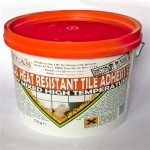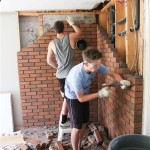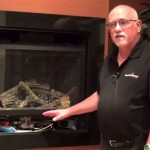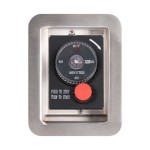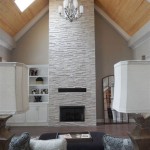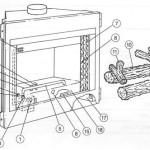DIY Gas Fireplace Installation: A Comprehensive Guide
Installing a gas fireplace in your home can be a rewarding project that adds warmth, ambiance, and value to your living space. While it's possible to tackle this project yourself, it's crucial to approach it with caution and meticulous attention to safety protocols. This guide will provide you with essential aspects to consider for a successful DIY gas fireplace installation.
1. Safety Precautions
Gas fireplaces, when improperly installed or maintained, can pose significant fire and carbon monoxide risks. Thus, prioritizing safety measures is paramount. Before commencing the installation, familiarize yourself with local building codes and consult a qualified gas plumber or engineer to ensure compliance and adherence to safety regulations.
2. Planning and Preparation
Meticulous planning and preparation are pivotal before embarking on the installation. Determine the ideal location for your fireplace, ensuring proper clearance from combustible materials and adequate ventilation. Gather necessary tools, including a drill, level, adjustable wrench, and pipe sealant. Acquire all required materials, such as the fireplace unit, venting supplies, and gas piping.
3. Vent Installation
Proper venting is indispensable for safe and efficient operation of a gas fireplace. Follow the manufacturer's instructions carefully when installing the venting system. Ensure the vent pipe is securely connected, properly sloped to prevent condensation buildup, and terminates outside the building at an appropriate height.
4. Gas Line Installation
Installing the gas line requires utmost care and adherence to safety standards. Obtain the necessary permits from the local authorities and utilize certified gas piping materials. Seal all connections using approved gas pipe sealant. If you are not confident handling gas lines, it is strongly recommended to seek professional assistance from a licensed gas plumber.
5. Fireplace Unit Installation
Once the vent and gas line are in place, you can proceed with installing the fireplace unit. Carefully follow the manufacturer's instructions, ensuring the unit is level, securely fastened, and correctly connected to the gas and venting system. Pay particular attention to electrical connections and ensure they are made in accordance with the manufacturer's specifications.
6. Testing and Certification
Upon completion of the installation, it is crucial to conduct thorough testing to verify the fireplace's safe and proper operation. Turn on the gas supply and ignite the fireplace. Observe the flame pattern, ensuring it is steady and free of yellow tips. Contact your local gas utility or a qualified professional for final inspection and certification, ensuring your fireplace meets all safety requirements.
Conclusion
Installing a gas fireplace can significantly enhance your home's comfort and ambiance. By carefully following these essential aspects and adhering to safety protocols, you can successfully complete this project yourself. However, it is imperative to emphasize that gas fireplaces involve working with potentially hazardous materials and equipment. If you have any doubts or concerns, do not hesitate to consult with qualified professionals to ensure the safety and longevity of your new gas fireplace.

How To Install A Gas Fireplace Framing Finishing Tylynn M

Diy Gas Fireplace

How To Install A Fireplace Insert Diy Save Money

I Built A Fireplace Easier Than Thought

Diy Gas Fireplace Surround Modern Remodel

How To Install A Gas Fireplace Diy Built In

How To Install A Gas Fireplace Framing Finishing Tylynn M

How To Select And Install A Gas Fireplace Log Set Fireplaces Direct Learning Center

Install A Gas Fireplace Framing Finishing Pt 2 Diy Living Room Remodel

How To Install A Gas Fireplace Framing Finishing Tylynn M

